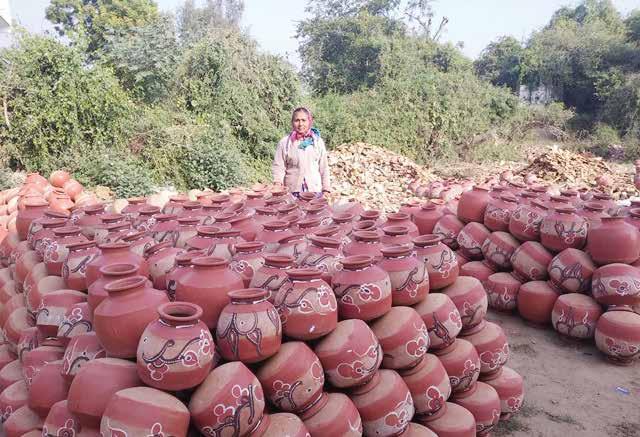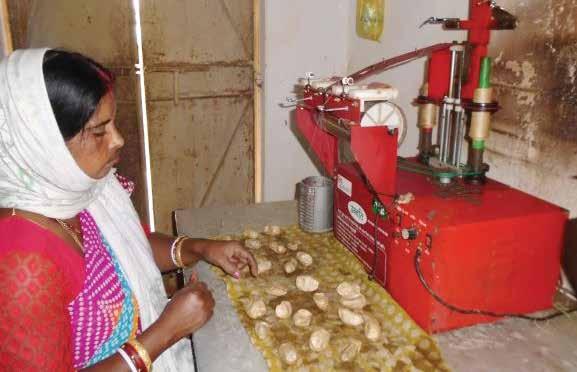37
TABLE 7: Solar potential in different studied clusters in Gujarat
Cluster
District
Total number of units
Daily electricity consumption (kWh)/unit
Solar capacity for individual units (kWp)
Total solar potential in the cluster (kWp)
Pottery cluster
Ahmedabad and Gandhinagar
132
1.5 kWh
0.5 kWp
66kWp
Kutch and Surendranagar Salt Cluster
Kutch, Surendranagar, Patan
40,000 Agariyas (estimated)
11.2 kWh (by 2 HP pump)
3.5 kWp (for 2 HP pump)
140,000 kWp
4.3 Jharkhand
4.3.1 Maganpur Tailoring Cluster
Jharkhand is known for its vast forest covers and significant tribal population. Rich in mineral resources, the state is home to some of India’s premier industries, such as Bokaro Steel Plant, Tata Steel, Tata Motors, Bharat Coking Limited, ACC Limited, Central Coalfields Limited, among others. Apart from large industries, Jharkhand is also home to a sizeable number of MSMEs (1.58 million), of which the maximum share is of microenterprises (1.57 million). The MSME sector of Jharkhand employs around 2.5 million people.
Cluster profile
Much emphasis is laid on the development of industries in the state. The Industrial and Investment Promotion Policy of 2016 has ample provisions to create an enabling environment for fostering industrial growth. In terms of energy, the policy encourages the use of clean energy in business. Capital incentives in the form of subsidy (33%) for pollution reduction and energy saving in MSMEs are mandated in the policy. The policy also aims to attract private investment in solar rooftop projects. The Jharkhand State Solar Policy, 2015 also promotes and incentivizes installing off-grid, decentralized solar plants and rooftop solar in industries. The micro industry clusters studied for solar feasibility in Jharkhand are detailed further.
Maganpur is a village in the Gola Block of Ramgarh district, Jharkhand. It is located 34 km east of the district headquarters and 63 km from Ranchi, the state capital. The Maganpur tailoring cluster consists of Maganpur, Gola, and Sisokala villages, which are mostly dominated by traditional tailoring communities who have been practicing garment stitching for more than a century. According to Agragati, a local not-for-profit organization, there are more than 350 tailoring households in the village. The garment stitching largely includes basic women’s wear, such as blouses and petticoats. The tailors of the Maganpur village receive large chunks of standard-sized cut pieces of cloths designed for women wear from towns and cities, such as Ramgarh, Ranchi, Purulia, and Kolkata. The tailors are required to stitch the pieces together to form garments, ready to be delivered. The daily production among the units differs significantly depending on whether the stitching machine is manually operated or motorized. In the presence of reliable power, around 40–50% more stitching is possible using machines as compared to manual operations. Around 20–25 blouse or petticoat cut






